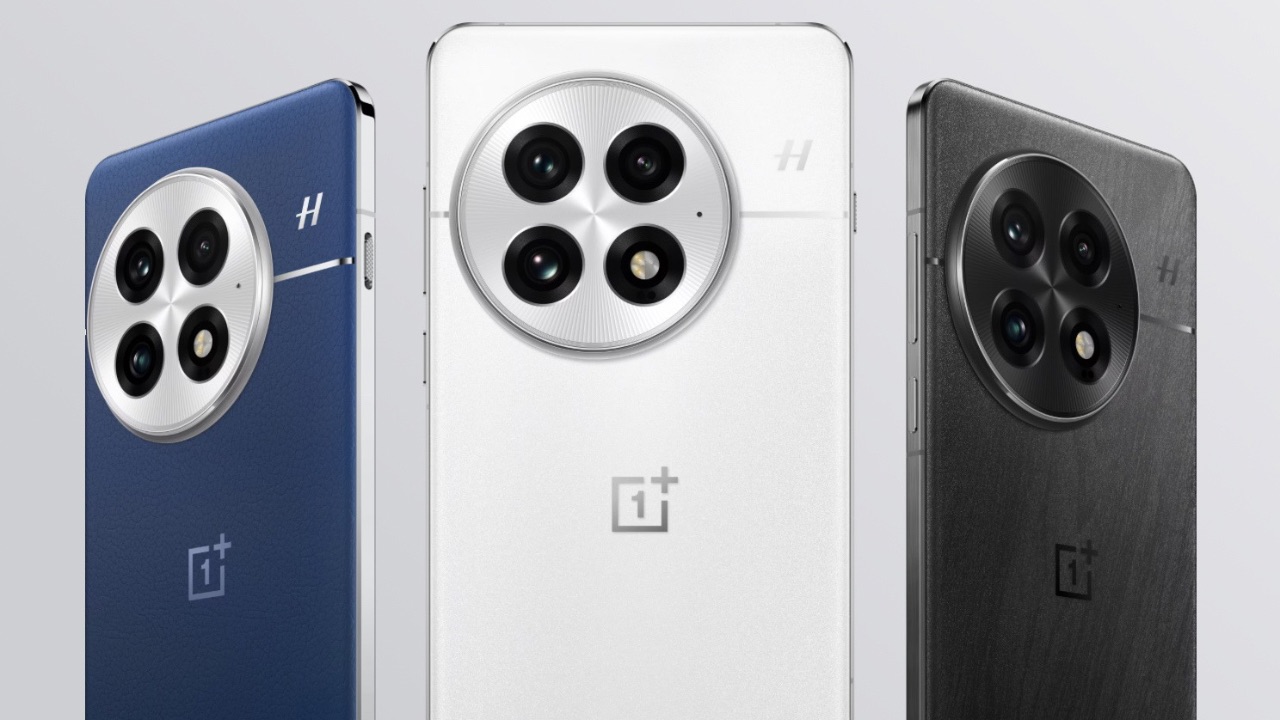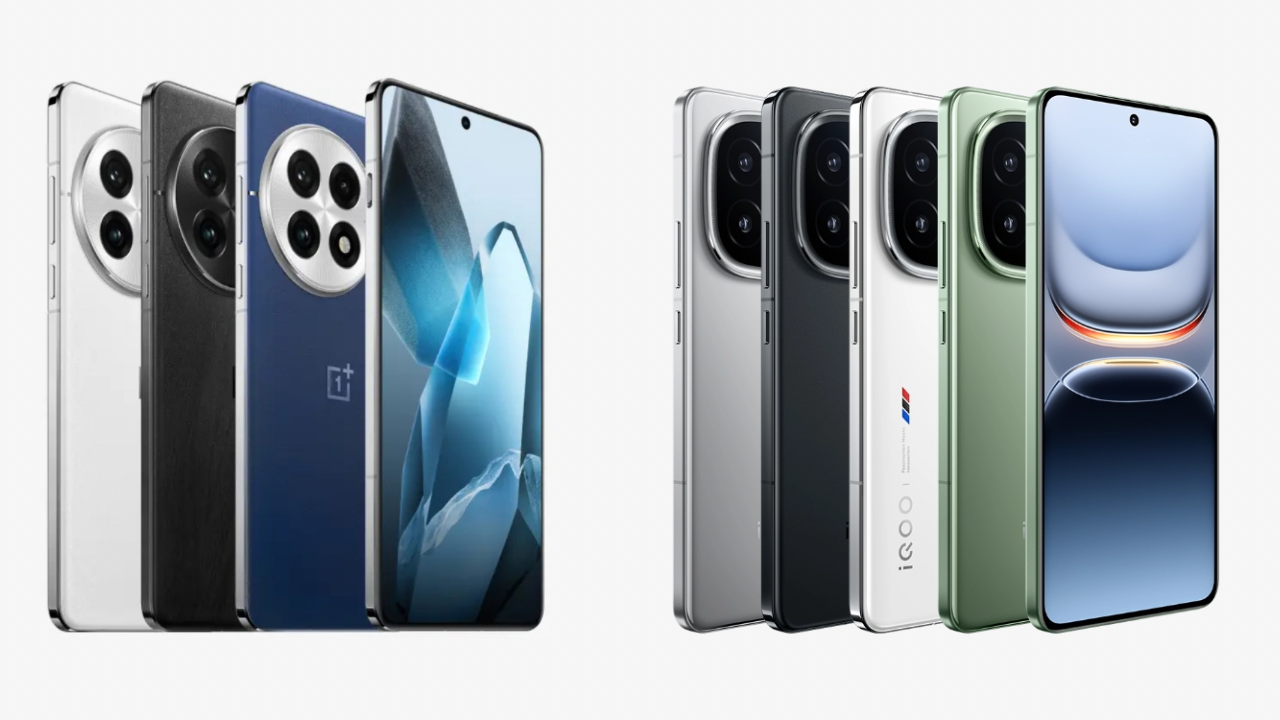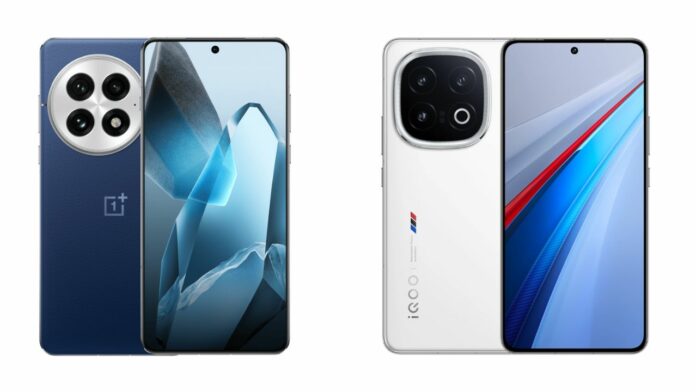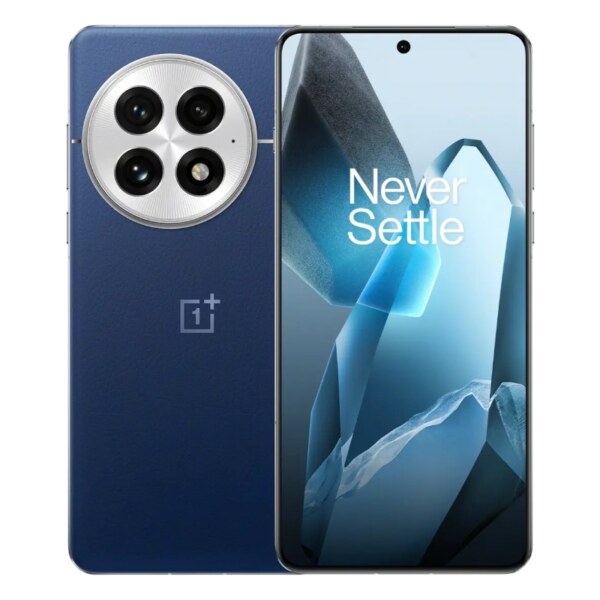OnePlus debuted the OnePlus 13 5G a couple of days back, shortly after iQOO also announced its iQOO 13 5G in China and both of them enjoy a strong userbase in their home countries. Both the devices are set for global launch and iQOO has even confirmed the iQOO 13 arrival in India, and if rumours are to be believed, OnePlus is planning to launch the OnePlus 13 in India early next year. Considering they’ll retain the specifications of their chinese counterparts, here’s comparison between the OnePlus 13 5G and the iQOO 13 5G.
Display
The OnePlus 13 5G sports a 6.82-inch QHD+ (3168 x 1440 pixels) 120Hz 3D AMOLED LTPO display. Furthermore, there is 4500 nits of peak brightness, adaptive refresh rate, 100% DCI-P3 colour gamut, 93.5% screen-to-body ratio, Dolby Vision support and Crystal Shield ultra-ceramic glass protection.

The iQOO 13 5G sports a 6.82-inch 2K 8T LTPO OLED flat display with a 144Hz refresh rate, 1800 nits brightness in HBM mode and 4500 nits peak brightness, 2592Hz PWM dimming, and OLED circular polarized light eye protection technology.

While both of them have an equally strong display, the one on the iQOO 13 takes the lead due to a higher 144Hz Refresh Rate support. Keeping that aside, they are equally bright, have a QHD resolution, and support LTPO technology for adaptive refresh rate as well.
Software & Performance
Both the iQOO 13 5G and the OnePlus 13 5G are powered by the latest Snapdragon 8 Elite SoC, and get up to 1TB of UFS 4.0 storage. However, OnePlus offers a model with 24GB of RAM while iQOO 13 maxes out at 16GB, due to which OnePlus 13 wins in this round. As for software, they come with Android 15-based skins out of the box and because we haven’t used the devices personally, we won’t comment on which software skin is better out of the two.
Cameras & Battery
The iQOO 13 features a triple-cam setup on the back, including an OIS-assisted 50MP f/1.88 Sony IMX921 primary camera, a 50MP f/2.0 Samsung JN1 ultra-wide-angle lens, and a 50MP f/1.85 Sony IMX816 2x telephoto sensor with OIS. A 32MP f/2.45 sensor handles the selfies and video calls on the device.

The OnePlus handset has a triple camera setup at the rear including a 50MP f/1.6 Sony LYT-808 primary sensor with two-axis OIS, 50MP f/2.0 Samsung JN5 ultra-wide angle sensor, and a 50MP f/2.6 Sony LYT-600 periscope telephoto camera with OIS, 3x Optical Zoom support and 120x Digital Zoom support. On the front, there is a 32MP f/2.4 Sony IMX615 sensor for selfies and video calls.
While the types of Sensors in use are identical, on paper, the OnePlus 13 seems to have been using superior sensors over iQOO 13’s. But, that’s just on paper and in real world, the results might surprise so we won’t declare the better smartphone in this segment either.
As for the battery, the iQOO 13 draws power from a huge 6150 mAh battery with 120W fast wired charging. The OnePlus 13 is backed by a 6000mAh battery that supports 100W SuperVOOC fast wired charging, 50W wireless charging, 10W reverse wireless charging, and 5W reverse wired charging.
Although the iQOO 13 features a slightly larger battery and faster charging, the OnePlus 13 compensates by offering wireless charging, which the iQOO 13 lacks. As a result, we’d call this round a tie.
Conclusion
Both the smartphones are so identical in some aspects, that they make it quite difficult to pick one over the other. One of the major deciding factors would be price, and in India at least, we’ll have to wait for a while to make a choice between the two. In China, the iQOO 13 starts at CNY 3,999 (approx Rs 47,100) while the OnePlus handset begins at CNY 4,499 (approx Rs 53,000).
While the price gap isn’t that big, the iQOO 13 takes a lead here as well, especially if you want to buy it for gaming, as the 144Hz panel will account for a smoother experience than OnePlus’ 120Hz panel. However, if you want better cameras and a better multitasking experience, we feel the OnePlus 13 would serve you better based on the camera sensors it uses and the amount of RAM it offers.




